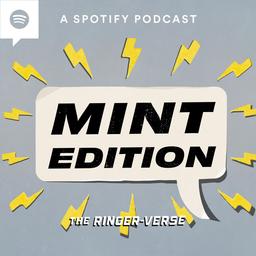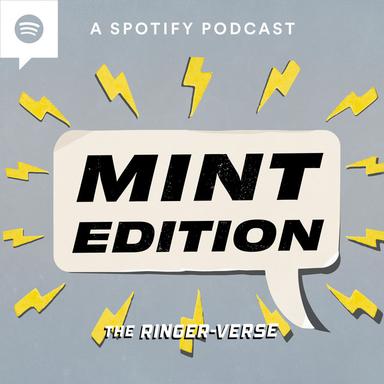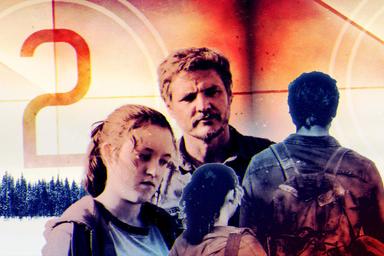
Even before HBO announced it would be making a live-action adaptation of The Last of Us, fans had an actress in mind to play Ellie: Kaitlyn Dever. In fact, the creative force behind the franchise was already two steps ahead. In 2015, game developer and series cocreator Neil Druckmann was exploring turning the game into a film, and Dever did a table read as Ellie. Ultimately, by the time the show came together many years later, Dever—who is now 28—had more or less aged out of the role. HBO instead cast Bella Ramsey, who is seven years Dever’s junior, as the 14-year-old heroine and moved forward with adapting the game into a television series.
But on Sunday, Dever will make her long-awaited Last of Us debut. Instead of playing Ellie, she’ll play Abby—a character who, in case you’re unfamiliar with her, is in some ways a mirror image of Ellie. That’s a choice I have to think is intentional on the parts of Druckmann and fellow showrunner Craig Mazin. Abby is a, well, polarizing character. Casting the actor whom fans had hoped would play Ellie feels like a way to hammer home one of the major points of the game: You can’t sympathize with one but not the other. Abby is Ellie, in a different place, a different life.
This casting has me excited for the second season of HBO’s The Last of Us, which is set to adapt some but not all of The Last of Us Part II in seven episodes. A lot of gamers didn’t love The Last of Us Part II. Others thought it was a masterpiece. I fall into the latter camp—and I’m hoping the second season of the show can help the skeptics see the light.
(Seriously, non-gamers: last chance to avoid spoilers.)
First, let’s start with what gave Part II such a thorny reception. While it’s worth noting that the game was universally praised by critics, fans weren’t quite as bullish. I recently polled my longtime friend group—all gamers—about The Last of Us Part II, and opinions were mixed. Some had gripes with the order in which the story was told. But others praised the bifurcated structure that splits playtime between Ellie and Abby. Some said the gameplay was just “fine,” while others called it “really satisfying.” Eventually, the phrase “ludonarrative dissonance” was used. Still, all expressed interest in the show.
Elsewhere, there are bad-faith criticisms of the game. There’s a transgender character, and thus—especially considering there are two female protagonists and no male ones—an endless number of claims that the game is “woke.” You know the pattern.
I’ll grant that some of the broader gripes are legitimate. The narrative structure forces you to play as Ellie for hours and hours before addressing the question of why Abby killed Joel, which creates some awkward pacing issues for the first third or so of the game. Even for the postapocalyptic world of this series, Part II is almost indescribably bleak and mostly devoid of humor. And Ellie’s character lost a lot of the charm she had in the first game (understandably so, but still).
But the highs of the game are well worth those lows. The Last of Us Part II is a unique experience—it challenges audiences’ assumptions about what a sequel can be. And because of that, it’s really remarkable.
Audiences know how sequels work. We understand that when James Bond returns, he’ll need to use some fantastical gadgets and cool cars to stop a maniacal villain (and, probably, get a girl). When Indiana Jones returns, he’ll use his whip and his archeology knowledge to put a priceless artifact in a museum. Even more prestigious and less formulaic properties follow a pattern—when The White Lotus returns, we know it’ll feature rich people who can’t escape their humorous and self-inflicted problems and that someone will get murdered.
But The Last of Us Part II doesn’t follow a pattern laid out by the first game. Joel is dead. The Fireflies aren’t around. Ellie isn’t looking for a cure to the infection. Part II could have easily been The Adventures of Joel and Ellie 2. Instead, it’s an entirely new thing.
(This is also partly why a Part III game is far from certain. “Don’t bet on there being more of Last of Us,” Druckmann told Variety in March. “This could be it.”)
Naughty Dog, the game’s developer, could’ve created a very straightforward story for Part II. Ellie could’ve continued looking for a cure—or at least an explanation for her immunity. Joel could’ve accompanied her. Along the way, Ellie could’ve learned about Joel’s choice to save her at the end of Part I and reckoned with whether that was what she really wanted and what that means for her relationship with him going forward. This is a game that could’ve won many Game of the Year awards—just as the Part II we got ultimately did.
Instead of taking the obvious path, Naughty Dog made the brave decision to kill Joel and make Part II a tale of mirroring revenge narratives. By having Joel die so early, the studio leverages the fact that the game is a sequel—that the player already has a strong connection to Joel—to create an unrivaled emotional impact. The game’s creators want the player to feel exactly like Ellie—stunned and filled with rage, grief, regret, and confusion. Then, when the point of view switches to Abby, they hope players slowly reflect on those feelings.
It’s intentionally unpleasant. In a way, this game was always going to be polarizing—there is no way to tell that story, hoping to have that kind of impact on the audience, and have every player enjoy it. But for me and many others, it was brilliant. An incredible story told in an incredibly affecting manner. A masterpiece.
That’s the game—but what about the show? The adaptation won’t—and can’t—be one-to-one with the game, and that will present some challenges. For one, the narrative structure that keeps Ellie so present for the first chunk of the game (while hiding Abby) likely won’t work for TV. It works in the game for two reasons. One is that the player, to some extent, is Ellie. There’s a bit more attachment to her, while television is told from a third-person perspective. Similarly, the player was Joel—so I’m wondering whether his death will hit quite as hard for show watchers as it did for game players.
The second, larger reason is that the game contains a complete story. But Season 2 of The Last of Us is just seven episodes long. It can’t conclude where the game does, but the show also can’t simply sideline Abby for an entire season and then wait something like two years to pick up her story. The show will have to spend more time with Abby early on—explaining her motivations and backstory well before those are presented in the game.
Maybe this change will work well. But I worry that change will sacrifice some of the oomph that made the game so wildly impactful. The whole idea is to fill the player with the same rage and lust for revenge that Ellie has … until the perspective switches and you realize that Abby has almost the exact same story and justification for revenge. Without that, you lose a lot of what made Part II so unique.
There’s also potential for the pacing to be all over the place. Both Ellie and Abby have a lot happen to them during the game. Add in the frequent flashbacks for each of them, and the game greatly benefits from a structure that puts each respective character on pause for a long period of time. But if the show chooses to tell both stories at the same time, it could end up flipping back and forth between perspectives and timelines so frequently that it becomes a mess. Pacing was already a problem in Season 1—a brisk 45-minute finale didn’t let the final events breathe—and I worry Season 2 will feel uneven. Plus, a lot could get left on the cutting-room floor.
Despite these concerns, Season 2 of The Last of Us has a chance to bring to TV the same refreshingly different kind of sequel that the franchise brought to video games. If it does its job well, there will be some people who hate it. I won’t be one of them.




